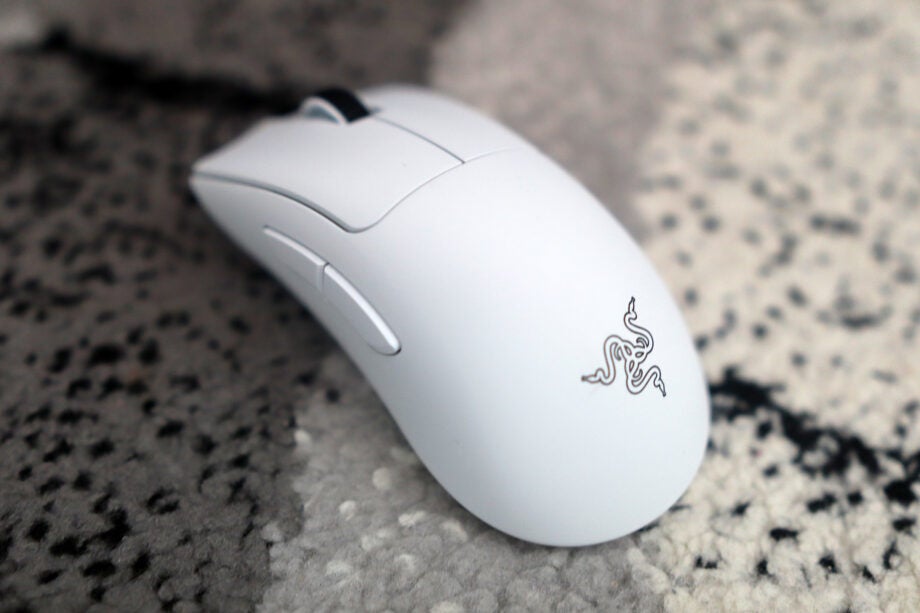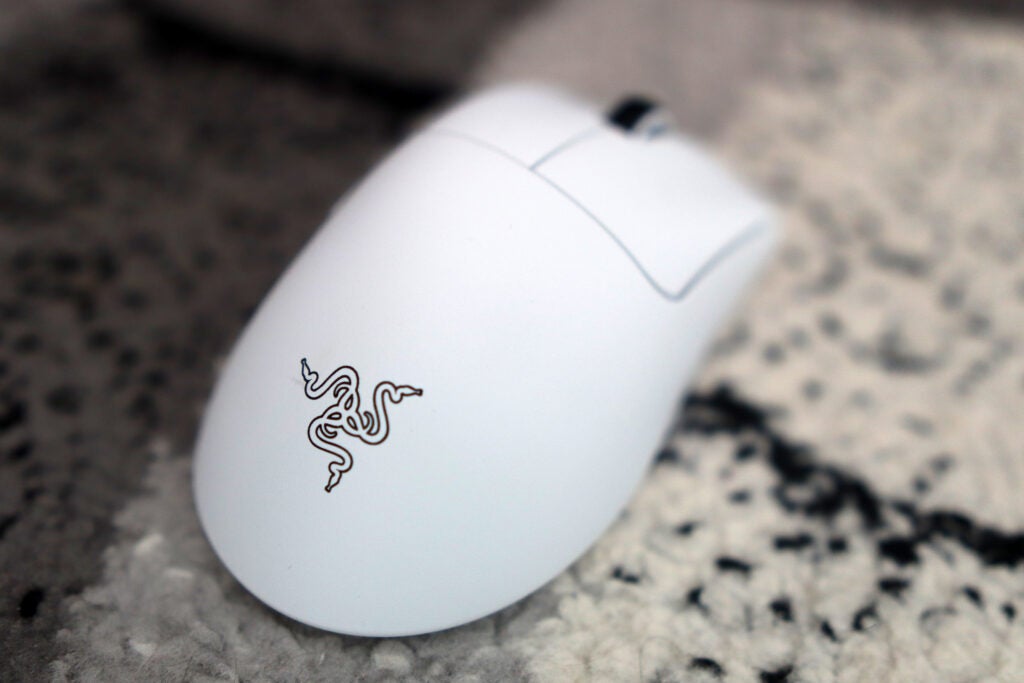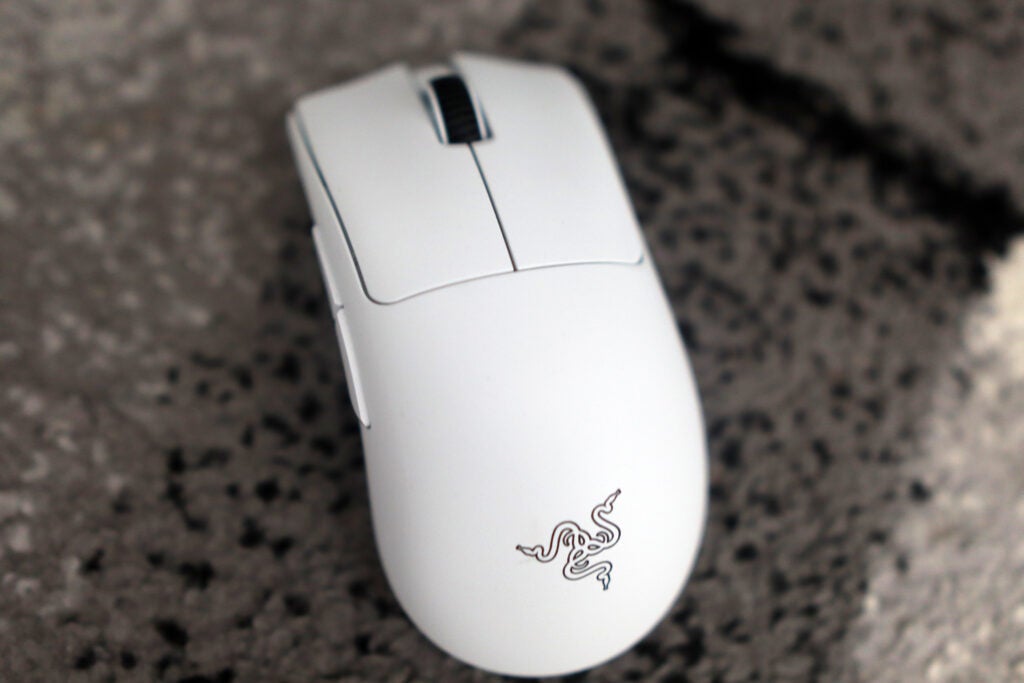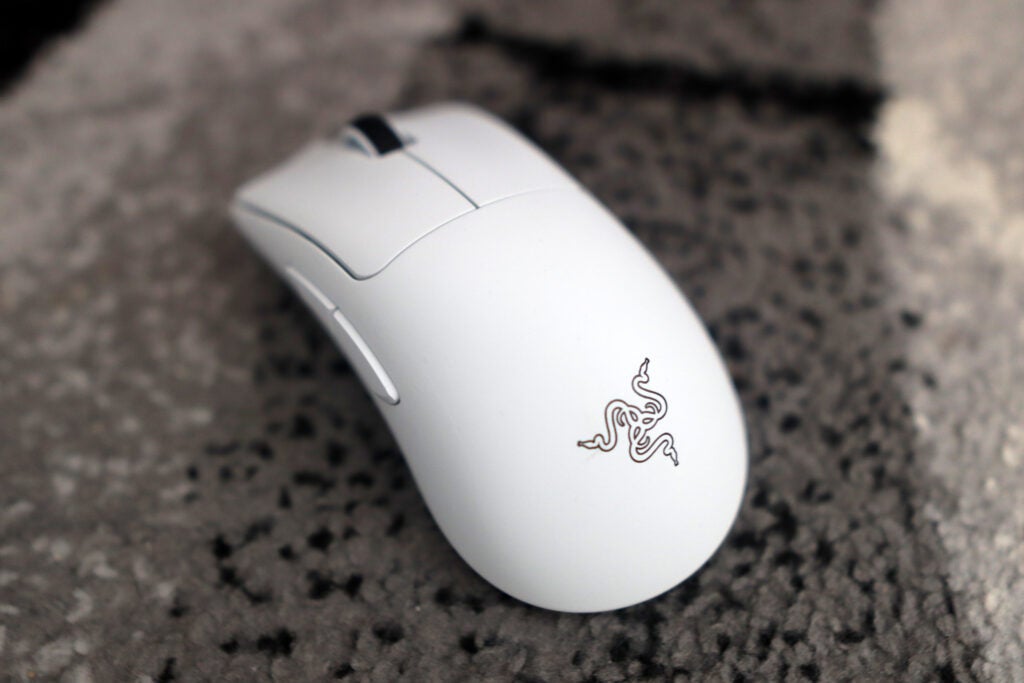Razer DeathAdder V3 Pro Review
A super-light mouse with an eSports-grade performance


Verdict
The Razer DeathAdder V3 Pro is one of the most responsive and fun gaming mice I’ve ever used, and also remains one of the most comfortable thanks to minor changes to the mouse’s signature shape. It’s just a shame that for all the above, Razer has upped the price significantly and sacrificed both Bluetooth connectivity and RGB lighting.
Pros
- Super responsive
- Sleek looks
- Marvellous battery life
- Convenient software
Cons
- Expensive
- No Bluetooth connectivity on this new model
- No RGB may not please some
Availability
- UKRRP: £149.99
- USARRP: $149.99
Key Features
- 30,000 DPI Focus Pro Sensor:Comes with a responsive 30,000 DPI sensor, making it ideal for pro gamers.
- HyperSpeed wireless connectivity:The DeathAdder V3 Pro also connects via Razer’s HyperSpeed wireless dongle (although Bluetooth has been axed)
- Compatible with Synapse 3 software:Even though there isn’t any RGB, Razer’s new rodent works with the brand’s clever Synapse 3 software for additional configuration.
Introduction
Razer’s all-new DeathAdder V3 Pro packs the powers of a 30,000 DPI sensor as well as the largest redesign in recent memory, plus an especially speedy wireless connection.
However, it comes at quite the cost; this all-new DeathAdder is the brand’s most expensive iteration yet, costing £149/$149. Is it worth your time, and can it remain as one of the best gaming mice money can buy? Here are my thoughts,
Design
- Clean, white frame
- Super lightweight
- Odd placement of DPI switch
The Razer DeathAdder V3 Pro has received the largest redesign in recent memory. Pull up a picture of a DeathAdder of old, and you’ll notice its iconic flares on the mouse buttons and a slight contour to its shape that made it one of the most comfortable mice to use, for gaming or otherwise.
This new version ditches those flares for a flatter and generally more rounded shape that looks more like Logitech’s G Pro X Superlight, especially in the white colourway of my review sample. In addition, Razer has also added a small ledge on the right upon which to rest your ring finger, while also raising the height of the scroll wheel and left-hand mouse buttons to optimise hand position.

All of these changes smooth out the DeathAdder’s signature curves and, arguably, appear a little jarring if you’re moving from the previous models to this new one. Nevertheless, the fact remains that the DeathAdder V3 Pro is supremely comfortable, especially with that re-engineering also bringing with it a large reduction to the overall weight. At just 63g, the DeathAdder doesn’t suffer the kind of lightweight feeling that’s associated with cheaper mice, but one that’s there to give pro players the edge.
The number of buttons on the new DeathAdder has dropped from eight to six, which streamlines the offering. The buttons themselves feel responsive and tactile, and take advantage of Razer’s latest generation of optical mouse switches for the absolute speediest of inputs.
Speaking of buttons, this redesigned DeathAdder sees the DPI switch button move to the underside of the rodent, which seems to be a backward, rather than forward, step in my book. It means making on-the-fly changes is a thing of the past. That button is also responsible for actually turning the mouse on and off, which seems like a needless cramming of two separate functions into one button for the name of convenience.
Performance
- 30,000 DPI sensor is incredibly responsive
- Bluetooth connectivity is a sore miss
- Gains in battery life are welcome
It’s all well and good introducing a host of cosmetic changes to the new Razer DeathAdder V3 Pro, but those have been done in the name of optimising performance. As such, it’s integral to note how this new DeathAdder feels in hand.
It packs a 30,000 DPI Focus Pro sensor, which is the same inside the Razer Basilisk V3 Pro, offering one of the most responsive gaming experiences I’ve ever had in a mouse, not least one this light. This combo of high power and low weight is a marker of how powerful the DeathAdder V3 Pro is, in a similar vein to how high-performance supercars are judged for their power-to-weight ratio.

In testing a variety of different FPS games such as CS:GO and Apex Legends, the DeathAdder V3 Pro performed admirably, feeling at home even in my usually incapable hands. Outside of games, however, that 30,000 DPI did feel especially skittish, and it wasn’t long before I changed back to my usual Logitech MX Master 3S for a more comfortable day-to-day working experience.
In the name of offering a streamlined but overall better experience, the DeathAdder V3 Pro does away with Bluetooth connectivity for going all-in on 2.4GHz wireless connectivity via a USB-A receiver. The HyperSpeed wireless connection is one of the best out there, helping the mouse to feel rather responsive and with no latency whatsoever.

It’s possible to make this connection even faster with the HyperPolling wireless dongle, which offers a 4000Hz polling rate. This isn’t something I’ve tested personally, but going by what Razer has said about it, it would take the DeathAdder V3 Pro to another level entirely.
The battery life on offer is also an improvement over the previous model, with Razer claiming 90 hours of run-time with the DeathAdder V3 Pro compared to the V2 Pro of old. This is a welcome addition, although it has led to the sacrifice of RGB lighting.
Software and Lighting
- No RGB lighting in the name of performance
- Synapse 3 is as responsive as usual
Usually in these Razer reviews, you’ll hear me laud the brand for offering the best combo of software and lighting in the business. However, with this particular option, that’s only true for half the story.
You won’t find any RGB lighting with this specific model of DeathAdder, which has been done in the name of offering better battery life – and, truth be told, it isn’t as much of a sore miss as you might expect. The DeathAdder V3 Pro still looks especially clean without it, and let’s face it, your hand will likely be covering the lighting in use anyway.
On the software front, it’s much the same story, The DeathAdder V3 Pro utilises Razer’s Synapse 3 suite, which is as handy as ever, delivering options to change DPI and remap buttons, as well as calibrating the mouse to use on different mouse mats for the most accurate tracking possible. There’s a lot you can do through Synapse 3 – apart from changing lighting, because it isn’t here.
Latest deals
Should you buy it?
You want the most responsive DeathAdder yet
The combo of a 30K DPI sensor and 63g weight makes this one of the most powerful mice out there today, as well as arguably the best DeathAdder for competitive play that Razer has ever made.
You want that sweet RGB lighting
If you’re wanting a DeathAdder that comes with RGB, the V3 Pro isn’t it. You’ll want to look back at last year’s model if that’s a priority.
Final Thoughts
The new Razer DeathAdder V3 Pro is arguably the biggest leap forward for one of the world’s best gaming mice to date. This new version brings an updated design, a boost in power of the sensor, while omitting the RGB that gamers are said to love.
It’s mostly a success, with this new iteration feeling excellent in the hand, especially thanks to its super-light weight of just 63g. The white colourway looks sleek and clean, and the lack of RGB isn’t too much of a sore miss. The omission of Bluetooth connectivity is a shame, as is its high price; otherwise, Razer would be sitting on a top score.
How we test
Every mouse we test is used for at least a week. During that time, we’ll check for ease of use and put it through its paces by playing a range of genres, including FPS, MOBAs and strategy.
Used as a main mouse for at least a week.
Games tested: Apex Legends and CS:GO
FAQs
The main differences here concern that the V3 Pro is lighter by 20g or so, has a more powerful sensor, but doesn’t have either RGB or Bluetooth connectivity.
Yes! The DeathAdder V3 Pro is brilliant for FPS titles, especially thanks to its high sensitivity and low weight making it rather responsive indeed.l
Full specs
Sustainability
TrustedReviews’ holds the fact that global warming is not a myth as a core value and will continuously endeavor to help protect our planet from harm in its business practices.
As part of this mission, whenever we review a product we send the company a series of questions to help us gauge and make transparent the impact the device has on the environment.
We currently haven’t received answers to the questions on this product, but will update this page the moment we do. You can see a detailed breakdown of the questions we ask and why in our sustainability info page.








